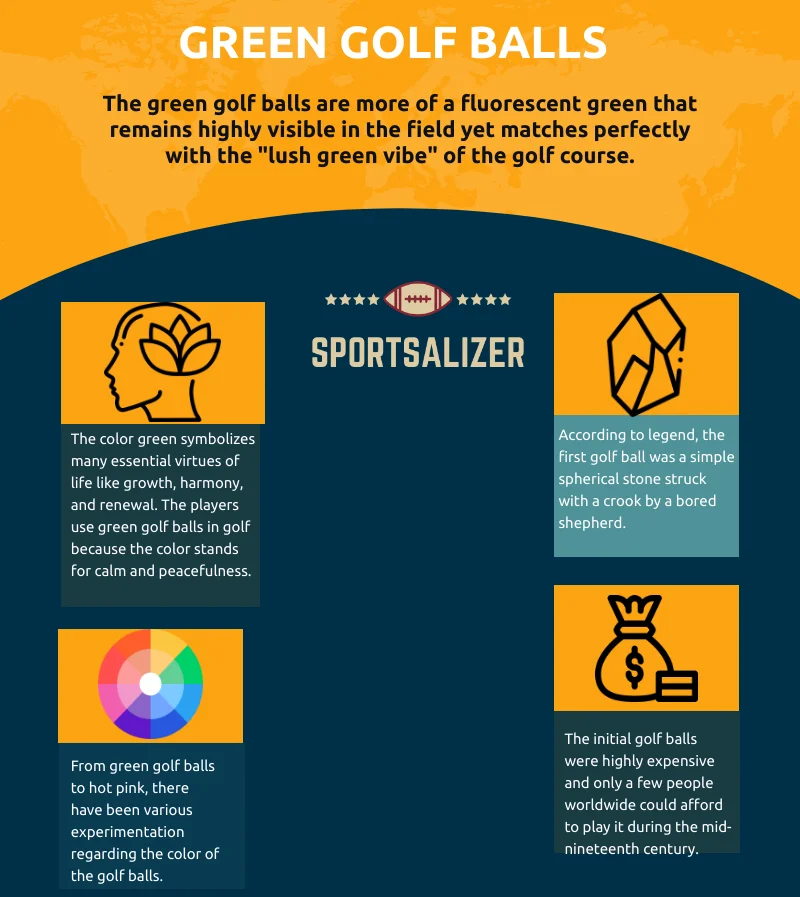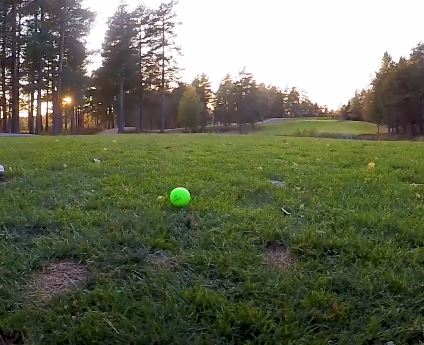Green Golf Balls: Play Golf, Now in a Different Color Apart From White!

Have you ever wondered how it would be to replace the traditional “white balls” used to play golf? Yes, we are talking about colored balls, especially “green golf balls.” We are all used to seeing white balls flying across the sky to have that perfect “tee-off.” But recently, the popularity and demand for colored balls have increased significantly. So what is the reason behind this new “hype?”
Green Golf balls are the new craze among the “golfers” presently. The green golf balls are more of a fluorescent green that remains highly visible in the field yet matches perfectly with the “lush green vibe.”
Contents
Significance of Green Golf Balls

There are many theories given by experts that justify the usage of colored golf balls. The most common view that most experts accept is that different colored balls apart from the classic “white” one helps to make a change in the mood of the game and bring forward a positive vibe. But is that true that just changing the color of the golf balls can help a player perform better in his game? Let’s find out!!
The introductory psychology behind the manufacture and usage of different colored balls is how it affects the player emotionally. Let us give you an elementary example. There is a reason why people prefer the color yellow in the morning. It is not just about the aesthetic value. But, the color “yellow” represents the color of the sun. It’s the color of “Hope” or “new beginning.”
Recommended Reading | 3 Hybrid Vs 4 Hybrid: Always Aiming for the Infinity and Beyond
When we wake up in the morning, many of us have a habit of saying a little prayer. It is not just about being spiritual, but the main reason behind it, we are hoping to have a great day ahead. When it rises, the yellow hue of the sun instills in us a feeling of hope that the days we will have will be successful, and we will be able to overcome our failures of yesterday.
This is the same reason behind using green golf balls. As many of us might think, green does not only represent “Nature or life.” The color green symbolizes many essential virtues of life like growth, harmony, and renewal. The players use green golf balls in golf because the color stands for calm and peacefulness.
Golf is not a fast-paced game like football or basketball. Thus, it is vital to remain calm during the entire game and not lose sanity due to anxiety or performance pressure. Green is the color that comes precisely in the middle of the visible spectrum of the human eye. Having the mean wavelength of all the colors in the spectrum, green produces a calming and soothing effect in the eye.
Not only this, the primary reason behind using green golf balls is that it does not produce a “jerking effect” like the red colored golf balls, yet gives the perfect visibility as well as a soothing effect on the yes, in the lush green golf grounds. A significant reason for using green golf balls is that it helps relieve anxiety. Every player is under particular pressure when they play any match in a certain tournament. The deciding factor of the game, the ball, if it comes in a color that helps calm the player down, is the best thing a player can ask for.
History of The Golf Ball
There is no substantial evidence that suggests how the game of golf began. But some popular stories go around, which gives us a little insight into the game’s origin.
According to legend, the first golf ball was a simple spherical stone struck with a crook by a bored shepherd. The stone landed in a hole in the ground by chance, inspiring the shepherd to strive to duplicate his “success” by hitting more stones into the hole. He found the newly developed game entertaining, and as he improved, he invited his buddies to play with him. And that, according to legend, is how golf began. Unfortunately, there is no historical evidence to support this claim, and we will likely never know who or when golf was founded.
Unfortunately, information on the ancient past of golf balls is scant. The very first golf balls were most likely constructed of wood, most likely beech, box-root, and similar hardwoods, according to most researchers who explored the early history of golf balls. The most premature recorded sale of a golf ball was in 1452, and the first feather ball, known as the “featherie,” was only released in the early 17th century.
Even though Haskell’s rubber-wound core ball is widely recognized as the very first contemporary golf ball, the ball used by today’s professionals and beginners dates back to the 1960s. The Titleist ProV1 and Titleist four-piece variant ProV1x golf balls dominate the golf ball industry.

Green Golf Balls: A break in the Tradition?

White balls have been used typically in golf since time immemorial. And frankly, golf is a game of Tradition. Since ancient times, golf has been played by primarily wealthy people. This was because the initial golf balls were costly, and only a few people worldwide could afford to play them during the mid-nineteenth century.
However, times have changed, and many people worldwide play this sport both professionally and for entertainment. The professional and the amateur player have started switching to colored variants of the golf balls. From green golf balls to hot pink, there have been various experimentation regarding the color of the golf balls.
Although the selection of color is mainly based on improved visibility both in the air and on the fairways and in the rough, it also reflects personal preference, with many converts amongst the players just gravitating towards the color they prefer.
FAQs on Green Golf Balls
Does LPGA star Paula Creamer prefer green golf balls?
Paula Creamer is known for using not the green golf ball, but her favorite is the hot pink.
Do professional players use colored golf balls?
Although most professional players prefer to use white ones, others choose to play with golf balls of their favorite color.
Are green golf balls easier to see?
This is a very subjective thing to answer. But yes, if considered in general, the Green Golf balls provide the best visibility in the fields.










